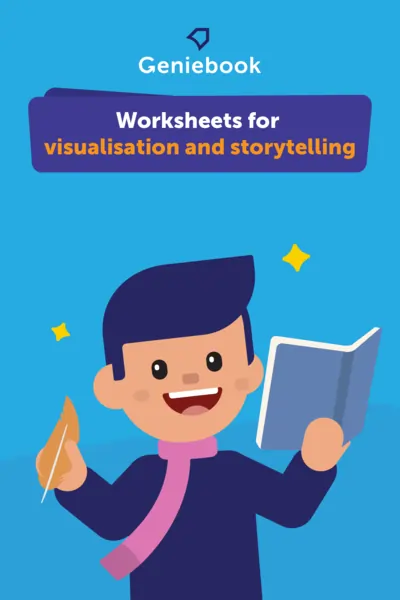12 Essential reading comprehension strategies for your child
- Tags:
- Primary English

When your child nails reading comprehension, it's not just their English paper 2 scores that soar; there’s a ripple effect that boosts their performance across all subjects. This is because, when your child masters reading comprehension, they will be better equipped to understand any topic that they may be reading for other subjects.
Now, let's explore some effective strategies to boost your child's reading comprehension skills.
1. Understand your child’s reading level
Knowing your child’s reading level is an important step towards improving their reading comprehension skills. By knowing where they stand, you can customise your instruction to suit their unique needs, guiding them to progress comfortably. This awareness not only enables tailored support but also helps pinpoint any learning gaps that might hinder their comprehension. If you are unsure about your child’s reading level, encourage them to take this MacMillan Reading test.
Pro tip: Should your child struggle with reading comprehension, providing passages slightly below their level can be a great confidence-building approach. This gradual progression allows them to build confidence before tackling passages at their actual reading level.
2. Enhance their vocabulary
Vocabulary and reading comprehension skills go hand in hand. When your child is comfortable with complex vocabulary, navigating reading passages becomes a breeze.
Here are some tips to elevate your child’s vocabulary
3. Reading aloud for better understanding
Motivating your child to read aloud adds an extra layer to their reading comprehension journey, combining both auditory and visual learning. This approach also prompts them to read at a deliberate pace, facilitating a clearer understanding of the passage.
4. Re-read the passage
Urge your child to read the passage twice for a thorough understanding. The second reading should be deliberate, with a focus on unravelling the meaning behind the words. This ensures a thorough and robust understanding of the passage.
5. Mastering main ideas
The ability to identify the main idea of a text is essential for developing strong reading comprehension skills. It empowers readers to pinpoint the core points, uncover the author's message, and establish connections within the text.
Identifying the main idea not only helps in recalling the content of the passage but also enhances the understanding of details by fostering connections between the main idea and specific points in the text. Proficiency in identifying the main idea allows readers to detect errors, inconsistencies, and shifts in the author's perspective, fostering robust reading comprehension skills and enabling students to make insightful, informed decisions about the text.
6. Mastering text importance
Many times it becomes difficult for students to differentiate between what’s important and what’s interesting to them. Or they have not yet mastered the skill of being able to understand what is a fact, and what is an opinion. Moreover, there's a need to adeptly identify cause-and-effect relationships and conflicts embedded in the passage.
During your reading comprehension sessions with your child, encourage them to pinpoint and highlight essential information in the text. Subsequently, prompt them to articulate ways they can enhance this skill, fostering a deeper understanding of the material.
7. Drawing informed conclusions
A powerful technique to nurture robust reading comprehension skills in students is to guide them in making inferences. This skill involves weaving together various pieces of information from a text to formulate a well-founded conclusion.
For instance, if a text reveals a character's troubled family history alongside their current feelings of sadness, a student could infer that the character is likely experiencing depression.
Encouraging students to make these connections enhances their understanding of the text, providing insights into the underlying themes and ideas.
8. Sharpen comprehension monitoring
Comprehension monitoring is about reading passages with a clear understanding of every detail. Here are a few things you can encourage your child to do to master their comprehension monitoring:
-
Pause for reflection
Between paragraphs, encourage your child to pause and reflect on what they understood and what was confusing. Encourage them to focus on areas of confusion and seek help from parents or teachers to help them understand the content.
-
Express in their own words
Another effective strategy is to have your child rephrase the text in their own words. This not only reinforces their understanding but also promotes active engagement with the material.
9. Broaden reading horizons
Introduce your child to a diverse range of reading materials, encompassing both fiction and non-fiction. Expanding their reading repertoire in this way greatly improves their comprehension skills.
10. Hone visualisation skills
Research indicates that students who learn to visualise what they're reading achieve better recall than those who don't. Parents can support this skill by encouraging students to read passages and then illustrate their interpretation of the events.
Download this free printable to help your child master visualisation and storytelling using story maps!

11. Master storytelling using story maps
Narrative texts can be challenging for many students, especially with the abundance of figurative language. One effective way to overcome this challenge is by practising with story maps.
As students read the passage, they can map out the following details to improve their understanding:
- Setting: Identify where and when the story unfolds.
- Characters: Count the people or animals in the story and understand their importance.
- Plot: Provide a brief description of what the story is all about.
- Theme: Understand the author's intended message in the story.
This approach aids in a better grasp of the passage and improves overall comprehension of the text.
12. Understand the point of reference
Understanding the idea of a point of reference is vital when responding to questions. The point of reference is the specific focus or context mentioned in the question.
For example, if the question is, 'Why did Maya decide to cancel her plans?' the points of reference are 'Why,' 'Maya,' and 'cancel her plans.'
So, a correct response should highlight the cause of action, like 'Maya decided to cancel her plans because she wasn't feeling well.' It's important to adhere to the main elements highlighted in the question to ensure the correct point of reference and provide an accurate answer to score full marks.
In summary, developing solid reading skills in your child is a varied process with many benefits. We trust this article has provided useful guidance for steering your child in the right direction.


 SG
SG  VN
VN 



















